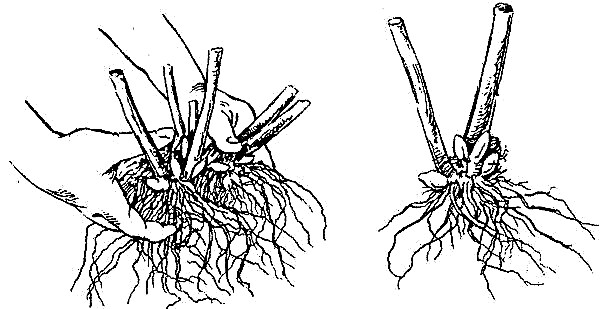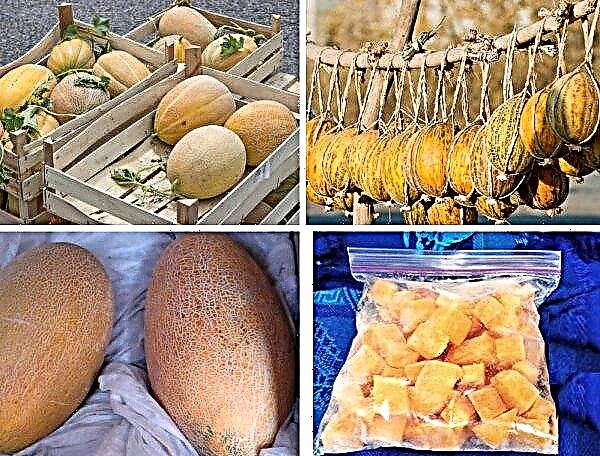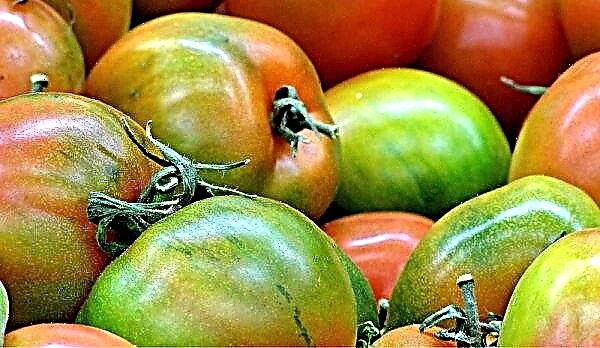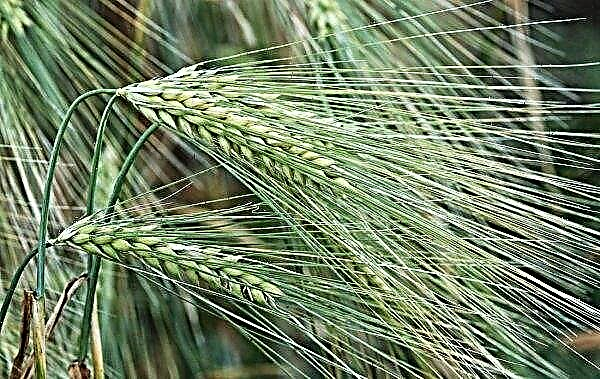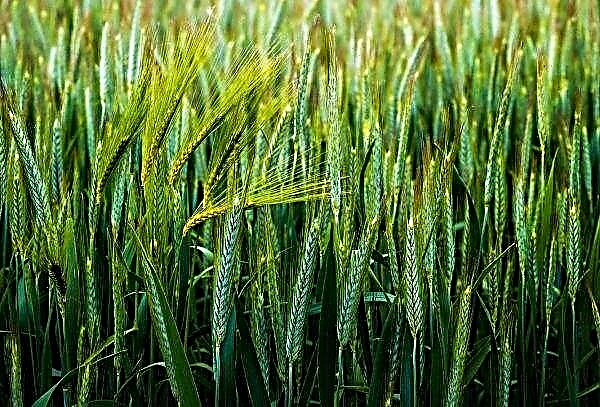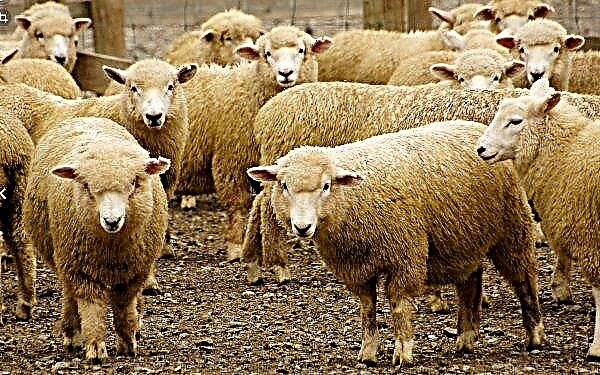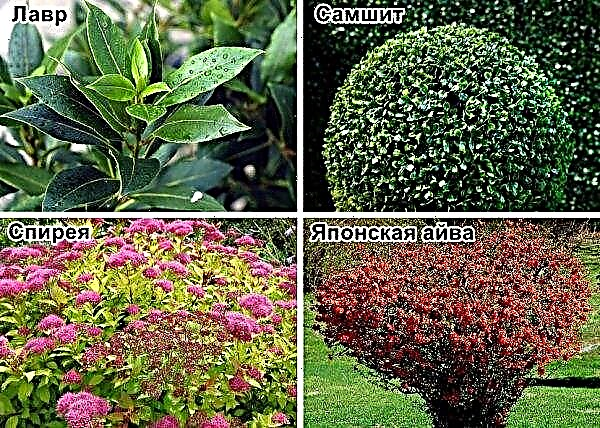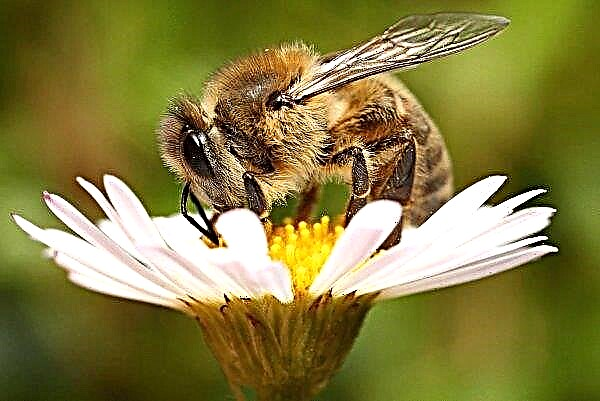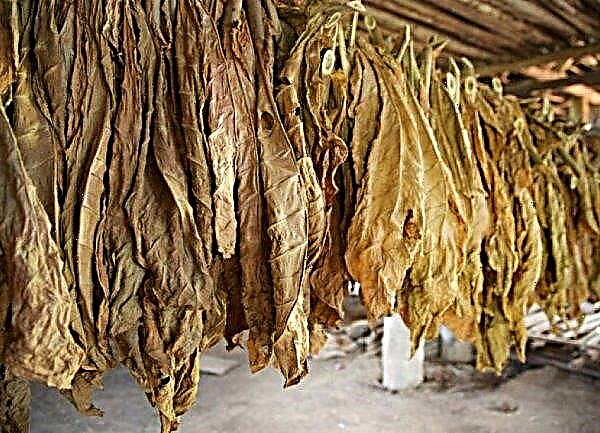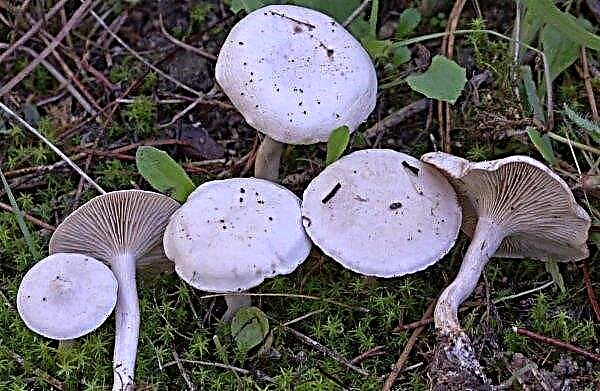Lovers of coniferous trees can be recommended to plant a mountain pine Mugus (Pinus mugo) in their garden, whose homeland is the Eastern Alps and the Balkans. This decorative evergreen shrub will decorate any site and will not leave anyone indifferent.
Botanical tree description
Pine Mugus (Mugo var. Mughus or Pinus montana mughus) is a coniferous plant, which is considered not a variety, but a subspecies, so all representatives are similar to each other.
The following features are characteristic of this mountain shrub:
- on the creeping crown, short shoots bent up are placed;
- slow-growing and grows in height about 2 m (the same crown diameter). The growth for the year is 10 cm in height and about 12 cm in width;
- young shoots are characterized by a smooth green bark, which later acquires a gray-brown color and is exfoliated by scales (they do not crumble, which is a species sign of rocks);
- the needles have a rich green color, densely located on the shoot. Needles (length from 3 to 5 cm) are collected in 2 pieces;
- cone-shaped light brown cones (3–6 cm) are located on a short cut and look to the side or down;
- a very long, tenacious and powerful root, due to which the plant can grow in the mountains, on cliffs and other seemingly inappropriate places;
- tolerates urban polluted air well.
Video: Pine Mugus
Landing
When landing, you should consider some nuances:
- the suitable period for landing is the second half of April - early May or August - September;
- the place of growth should be sufficiently lit;
- the soil can be clayey, sandy or even rocky. Only salt marshes are not suitable;
- the distance between adjacent specimens is not less than 1.5 meters.
Did you know? Tallest pines — Lambert pines growing in North America and reaching heights of about 70–80 m.
The landing algorithm is as follows:
- At a previously selected location, dig a hole up to 0.8–1 m deep and 20–25 cm in diameter wider than an earthen coma with roots.
- On heavy soils, it is recommended that the bottom of the landing pit be covered with a layer of drainage from rubble or gravel mixed with sand (thickness up to 20 cm). On sandy soils, this condition is not necessary.
- Sprinkle the drainage layer with the soil mixture (20 cm). Recommended composition: 2 parts of turf land and 1 part of sand or clay.
- Pour a bucket of water into the hole and pour a little soil substrate on top.
- Place the seedling with its roots in the pit. It is necessary to ensure that the root neck of the shrub is located at ground level, and also it should be facing the sun on the same side as before the transplant.
- Sprinkle the root system with soil, gradually tamping, until the pit is filled.
- Water a little more and mulch.

Pine care
Mugus is an undemanding and drought-resistant coniferous representative that withstands freezing up to -45 ° C and is capable of growing up to 150 years with proper care.
Important! The root neck of the Mugus pine should be at ground level or 1–1.5 cm higher, but no more, otherwise this dwarf specimen will hurt and may die.
Watering and feeding
Pine requires frequent watering only in the first time after planting, while the roots take root. Late waterlogging can only do much harm, since Mugus is better able to tolerate drought than excess moisture. Trees under 10 years old are watered in the hot season once every 10-14 days, and more mature specimens are watered once a month. Up to 4-5 buckets of water are poured under each adult tree.
As for top dressing, conifers need them less than deciduous trees, which annually ripen fruits and grow leaves (which requires a lot of nutrients).
Therefore, the following rules apply to fertilizers:
- under young pine trees under the age of 10 years, complex feeding for conifers (about 25-40 g / m²) is introduced every year. So, for example, the granular fertilizer "Green Guy - magnificent needles" is distributed in the spring along the trunk circle in the amount of 25 g / m²;
- foliar top dressing can be used. For example, a chelate complex with the addition of "Epin" or "Zircon" will not only make up for the lack of trace elements, but also increase resistance to stressful situations;
- Pines respond well to the application of vermicompost. And the needles crumbling from plants in itself is an ideal fertilizer;
- you can not make organic matter in the form of manure, as this can destroy the pine.

Loosening and mulching
Pine trees need loose and breathable soil, so it should always be loosened or covered with a layer of mulch.
In relation to the mulching layer, there are also some rules:
- on light soils, the layer thickness is about 10 cm, and on heavy soils - from 5 to 8 cm;
- it is useful to add a small amount of bone meal to the mulch;
- in spring, it is necessary to rake the winter mulching layer so that the earth warms up faster. After warming the topsoil, the mulch can be returned back;
- so that the mulch from the mowed grass does not condense and does not become airtight, it needs to be raked periodically, and the rake circle must be combed;
- you can use peat or rotted sawdust (chips) for mulch. Fresh can not be used, as they will churn and greatly heat the trunk space, which will negatively affect the plant.

Pruning
Due to the slowly growing creeping trunk and the splendor of the branches, which give the Mugus pine a spherical shape, pruning is not particularly required. Only damaged and shrunken branches are removed, and also a haircut is carried out to give any unusual shape.
Important! It is recommended to cut conifers, but this is a big stress for them. Therefore, one should not reduce the volume by more than a third of annual growth.
Pine has some features: shoots grow only from the buds located on the tops of the branches. For this reason, there are a few rules to remember:
- the lignified branch is trimmed completely to allow lateral replacement branches to grow;
- if you cut off only part of the shoot, then dry branch will remain;
- to give greater decorativeness, it is recommended to shorten (pinch) not yet lignified shoots. This procedure is carried out in May - June at the stage of separation of young needles from the shoot.

Possible diseases and pests
Pinus mughus pine is a disease and pest resistant crop. But still, you should buy such plants in special nurseries, which will serve as a guarantee of the quality and health of the seedling.
Did you know? Swamp pine has the longest needles of all conifers. Their length is up to 45 cm.
If uncharacteristic changes have occurred on the plant, then their cause should be determined and appropriate measures taken:
- in too rainy season, pine can sometimes be affected by fungal diseases. The needles in this case acquire a brown color. Affected branches are removed, and the plant is treated with a 2% Bordeaux mixture or any other copper-containing preparation according to the instructions;
- if the needles at the ends of the branches sagged and changed color (became brown), then most likely these are signs of an umbrella disease. Affected branches must be cut and burned, and the bush treated with “Fundazole”;
- in order to prevent damage from aphids or butterflies, spraying with Lepidocide is carried out.

Needles are an indicator of pine health. The longer they stay on the plant (normally from 2 to 5 years), the better it feels. Strong shedding of needles is a sign of any violation of the development of the plant.
The use of wood in landscape design
Nature endowed the Mugus pine with an evergreen dense and compact crown, as well as miniature size.
Due to this, it is widely used in landscape design:
- it can be successfully planted on any stony and inclined surfaces due to its powerful and tenacious root. This quality is often used to strengthen the soil in sliding and crumbling areas;
- it also fits perfectly with rockeries and rock gardens, terraces and front entrances;
- not used as a tapeworm, as it looks exactly in group compositions;
- looks good in the company of other conifers (with a golden or blue crown), low roses, cereals, heather, peonies or ground cover plants;
- planted at the top of longline compositions, where lichens and mosses are located on the lower level;
- next to ponds, it looks original together with weeping willows.
Miniature Mugus is an excellent culture in terms of the absence of negative impact on other plants growing nearby. She looks great in a small garden and in large open park areas. With all this, it also enriches the air with volatile production.


